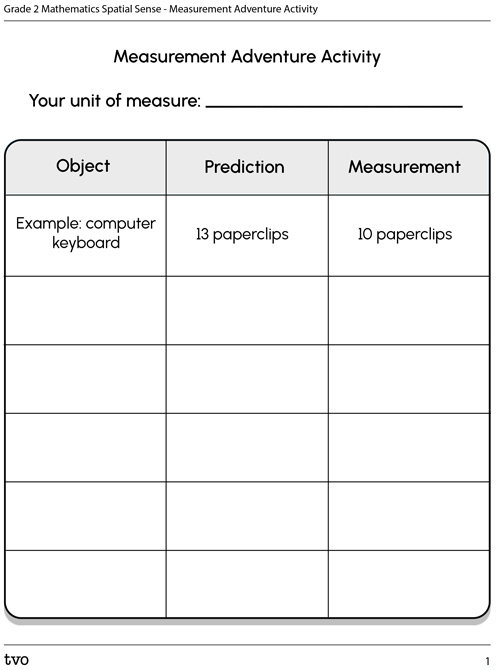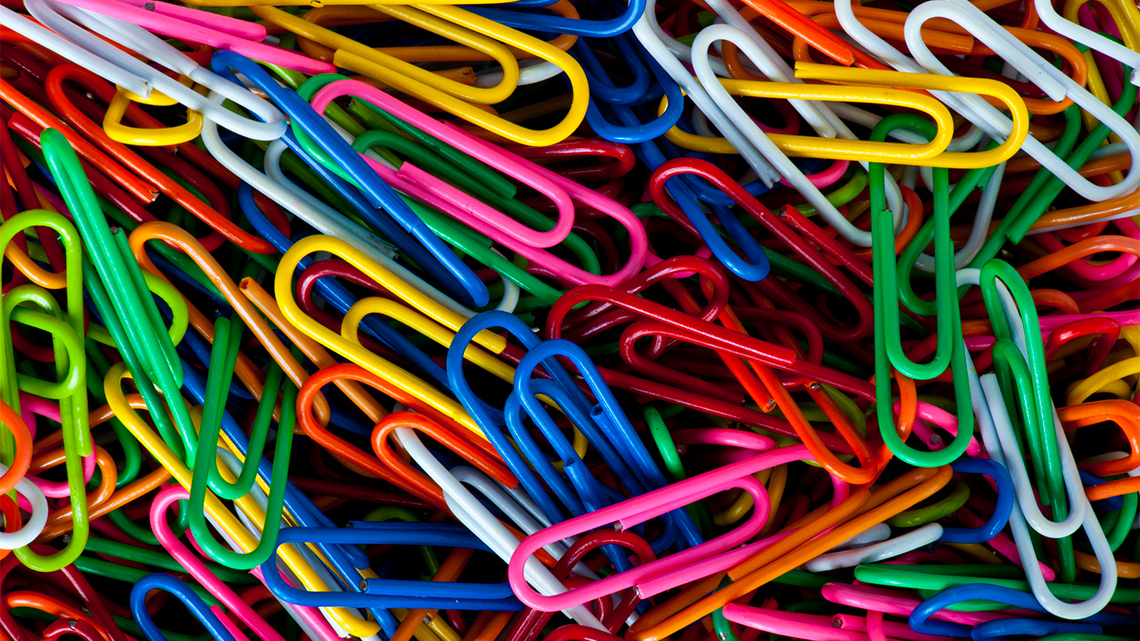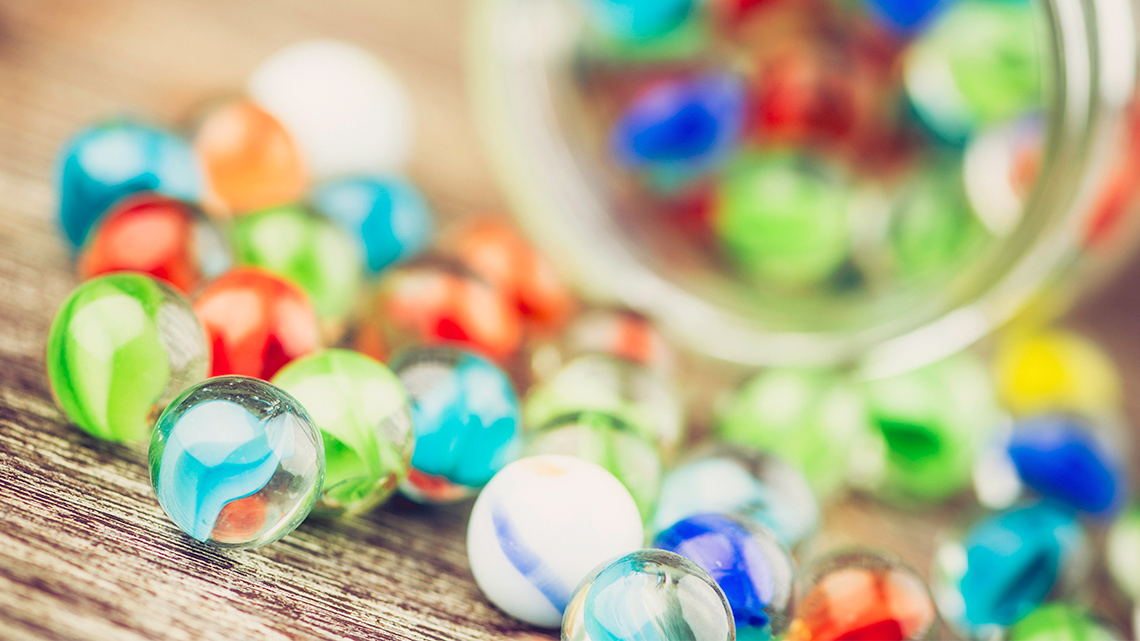Minds On
How do we measure objects?
Check out the following pencil and paperclip.

Brainstorm
Let’s think!
How can you measure the length of the pencil?
Record your ideas in a notebook or a method of your choice.
Action
Measuring
Length
Select the correct answer, then press ‘Check Answer’ to check how you did.
Press 'Result’ to explore a definition for length.
A length is the distance between two points, in any direction.
For example, the length of a pencil.

Using objects
We can use different objects to measure, such as:
- toothpicks
- crayons
- paper clips
- craft sticks
- snap cubes
Using diverse objects such as toothpicks or crayons to measure are examples of non-standard units of measure.
How to measure?
To measure an object correctly, let’s follow the steps.
Press 'Steps' to measure an object correctly.

To measure, begin by lining up the non-standard unit along one edge of the object. Then repeat the unit without gaps or overlaps. Stop when you get to the end of the object.

Finally, count out how many units it takes to match the length of the object completely.

Let’s measure!
Use the snap cubes to measure the length of each object:
For each sentence, select the missing “word” from the drop-down menu.
Measurement reflections
Use the following questions to reflect on your measurements.
Select the correct answer, then press 'Check Answer' to check how you did.
Measurement adventure
Explore the following four steps to practice measuring the length of different objects using non-standard units.
Press 'Steps' to explore the instructions for the measurement adventure activity.
First, select 5 objects of your choice that are different lengths.
Then, select a unit of measure.
You can use a Lego piece, toothpick, paperclip, anything you like! Just make sure it is shorter than the objects you choose to measure.
Next, predict the length of each object.
For example, if you have selected toothpicks as your unit of measure, how many toothpicks do you predict your object will be?
Finally, measure your object.
Count how many units it takes to match the length of the object completely.
Student Tips
Measurement steps
Remember to use the measuring steps from the Action section.
1. Select a unit of measure and use only one unit the whole time.
Press ‘Show example’ to access Step 1

2. Then, as you measure, repeat the unit or copies of the unit without gaps or overlaps.
Press ‘Show example’ to access Step 2

3. Finally, count out how many units it takes to match the length of the object completely.
Press ‘Show example’ to access Step 3

Answer the questions by completing the Measurement Adventure Activity activity in your notebook or using the following fillable and printable documents. You can also use a method of your choice.

Press the Activity button to access the Measurement Adventure Activity.
Activity (Open PDF in a new tab)Consolidation
Making connections

Let’s reflect on measuring with non-standard units of measure.
Consider the following questions:
- What was the longest object that you measured? What was the shortest? How do you know?
- Which object was the easiest to measure using the unit of measure you selected? Which was the hardest? Explain your thinking.
- What have you learned about measuring with non-standard units of measure that you did not know before?
- What do you have to keep in mind when you are measuring something?
Record your ideas in your notebook or another method of your choice.
Reflection
How do you feel about what you have learned in this activity? Which of the next four sentences best matches how you are feeling about your learning? Press the button that is beside this sentence.
I feel...
Now, record your ideas about your feelings using a voice recorder, speech-to-text, or writing tool.




